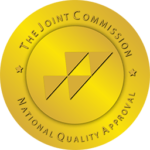In the realm of stimulant medications, the comparison between methamphetamine (meth) and Adderall sparks significant interest and concern. Although both substances are used to increase alertness and energy, their implications for health, legality, and society diverge substantially. This article delves into the origins, uses, effects, and ramifications of meth and Adderall, aiming to elucidate their differences and foster a deeper understanding of their roles in contemporary medicine and beyond.
Understanding Methamphetamine
Meth: A Brief History
Methamphetamine’s journey began in the early 20th century, initially synthesized for medical use. It found its way into over-the-counter products, wartime supplies for soldiers, and even weight loss remedies. However, the discovery of its high potential for addiction and abuse led to strict regulations, pushing it into the shadows of illegal drug trade and abuse.
How Meth Works
Meth acts as a powerful central nervous system stimulant. By flooding the brain with dopamine, it induces feelings of euphoria, heightened energy, and alertness. The drug’s rapid impact on the reward circuit of the brain accounts for its highly addictive nature, making users crave more of the substance to replicate the initial high.
Effects on the Body
The physical toll of methamphetamine is both severe and visible. Chronic use can lead to “meth mouth,” characterized by severe dental decay, skin sores from obsessive picking, drastic weight loss, and an overall gaunt appearance. Internally, it increases the risk of heart disease, stroke, and liver damage, contributing to a deteriorated state of health that can be difficult to reverse.
Understanding Adderall
Adderall: A Brief History
Developed for the treatment of Attention Deficit Hyperactivity Disorder (ADHD) and narcolepsy, Adderall is a blend of amphetamine salts. It gained FDA approval in the 1960s, providing a new avenue for managing these conditions. Its effectiveness in improving focus, attention, and control over impulsivity has made it a cornerstone in ADHD treatment.
How Adderall Works
Adderall increases the availability of neurotransmitters like dopamine and norepinephrine in the brain, enhancing concentration and alertness. Its action is more controlled compared to meth, designed to provide a steady, therapeutic effect over a period of time, reducing the potential for abuse when used as prescribed.
Effects on the Body
While Adderall is generally considered safe when taken under medical supervision, it is not without side effects. These can include insomnia, decreased appetite, weight loss, and cardiovascular issues. Its potential for addiction exists but is significantly lower than that of meth, particularly with responsible medical oversight.
Meth and Adderall: The Chemical Similarities
Chemically, methamphetamine and Adderall share a core structure, both belonging to the phenethylamine and amphetamine classes. This commonality explains some of their similar effects on the brain. However, the formulation and intended use of Adderall significantly limit its potential for abuse compared to meth.
The Legal and Medical Uses of Meth and Adderall
Understanding the legal implications of substance use is crucial. The Drug Enforcement Administration (DEA) classifies methamphetamine and Adderall differently due to their potential for abuse and addiction. Our programs include education on these legal aspects, empowering clients with knowledge to make informed decisions about their treatment and recovery.
Meth: Legal Uses
Despite its notorious reputation, methamphetamine is available under the brand name Desoxyn, prescribed in very limited circumstances for severe cases of ADHD and certain cases of obesity. Its use is tightly controlled due to its high potential for abuse and addiction.
Adderall: Legal Uses
Adderall, meanwhile, is widely prescribed for ADHD and narcolepsy. It is recognized for its therapeutic benefits in managing these conditions, with a risk management plan to mitigate the potential for abuse.
The Side Effects and Risks of Meth and Adderall
The Side Effects of Meth
Methamphetamine use carries significant risks, including addiction, cognitive impairment, and severe physical health issues. Its illegal status and the unsafe conditions under which it is often manufactured add to its dangers.
The Side Effects of Adderall
Adderall’s side effects are usually milder and more manageable, but it still carries a risk of addiction, particularly in individuals with a history of substance abuse. Heart problems and psychiatric conditions can also arise from its misuse.
Addiction and Dependency: Meth vs Adderall
The addiction profile of meth is far more severe, with a faster onset and more challenging recovery. Adderall, while potentially habit-forming, typically involves a more manageable dependency, especially when used as directed by a healthcare provider.
Social and Economic Impact
Meth’s impact on society is profound, associated with increased crime rates, healthcare costs, and loss of productivity. Adderall, given its medical legitimacy, has a different set of challenges, including the potential for misuse among students and professionals seeking cognitive enhancement.
Addiction Treatment Options
True Self Recovery offers a range of addiction treatment options tailored to individuals struggling with methamphetamine (crystal meth) or prescription stimulant addiction. Our intensive outpatient program (IOP) provides a structured, yet flexible approach to recovery, allowing clients to maintain their daily responsibilities while receiving treatment. For those requiring more support, our partial hospitalization program (PHP) offers a higher level of care without the need for overnight stays, ideal for those transitioning from residential treatment or needing more support than traditional outpatient care.
The Role of Cognitive Behavioral Therapy
Cognitive Behavioral Therapy (CBT) is a cornerstone of our treatment programs. This evidence-based approach helps individuals understand the connection between their thoughts, feelings, and behaviors, empowering them to make positive changes. CBT is particularly effective in treating stimulant drug addictions, including meth and Adderall, by addressing the underlying cognitive patterns that contribute to substance use.
Understanding and Treating Dual Diagnosis
Many individuals struggling with meth addiction or prescription medication misuse may also face co-occurring mental health disorders, a condition known as dual diagnosis. Our comprehensive treatment plans address both the addiction and any co-occurring conditions, such as anxiety, providing a holistic path to recovery. Anxiety treatment is an integral part of our dual diagnosis program, ensuring clients receive the support needed to address all aspects of their health.
The Importance of a Supportive Treatment Environment
True Self Recovery is committed to providing a supportive and healing environment through various program options, including residential treatment centers and outpatient programs. Our residential programs offer a safe space for individuals to begin their recovery journey, while our outpatient services provide flexibility for those who are ready to transition to a less intensive level of care.
Overcome Addiction at True Self Recovery
Addressing the complexities of substance abuse, drug abuse, and meth addiction requires a multifaceted approach. True Self Recovery is dedicated to providing evidence-based treatment options, educational resources, and ongoing support to help individuals understand and overcome the challenges associated with meth and Adderall use. Our goal is to guide each person towards a healthier, drug-free life while acknowledging the unique journey of every individual in recovery.
If you or a loved one are struggling with adderall or meth addiction, get in touch with True Self Recovery today.
FAQs
What makes meth more addictive than Adderall?
Methamphetamine’s highly addictive nature is due to its intense, rapid effect on the brain’s reward system, leading to a strong psychological and physical dependence. Adderall, with controlled usage and dosage, has a lower risk of addiction.
Can Adderall be used safely for ADHD?
Yes, when prescribed by a healthcare provider and used according to guidelines, Adderall is a safe and effective treatment for ADHD. Ongoing monitoring and communication with a healthcare provider are key to mitigating potential risks.
What are the legal implications of using meth?
Methamphetamine use, without a prescription, is illegal and classified as a Schedule II controlled substance due to its high potential for abuse. Possession, distribution, or manufacture of meth can result in severe legal consequences.
What are the treatment options for meth and Adderall addiction?
Treatment options include behavioral therapies, support groups, and, in some cases, medications to manage withdrawal symptoms and cravings. A personalized approach, considering the individual’s needs, is essential for effective recovery.



